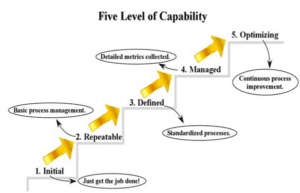Top 7 examples of supervised learning algorithms
Supervised learning algorithms are great for solving problems with a large amount of training data. The supervised learning algorithms are great for classifying high-dimensional data representing high-dimensional vectors and matrices. This post will discuss seven examples of supervised learning algorithms.
Linear Regression
It is a supervised learning algorithm that relates the value of one or more independent variables to the value of a dependent variable. The goal is to find linear combinations of these independent variables that can also predict values for your dependent variable.

The process behind linear regression is simple: you have some data, which might be either a set of samples or entire population distribution.
You then choose one or more continuous variables and their corresponding values and use them as inputs into a linear equation whose coefficients represent how much each input contributes to predicting your outcome variable's value.
Decision Trees
Decision trees are based on the principle that if you have enough examples of your training data set, then you can use these examples to create one tree per decision variable in your problem. In this case, multiple branches would come out of each node, representing different possible outcomes or predictions made by our model using each input variable.
Support Vector Machines (SVM)
Support vector machines (SVM) are supervised learning algorithms in binary classification. The SVM is also known as a kernel-based classifier. It uses the concept of high-dimensional data points to determine which of two classes (or categories) will be most beneficial for further analysis and prediction.
Logistic Regression
It is a supervised learning algorithm that can use for classification, binary classification, and multi-class classification. Given its probability density function, it predicts the probability of an event occurring.
Nearest Neighbor
Nearest neighbor is a supervised learning algorithm used to classify data.
The algorithm uses information about each point in your datasets, such as its x and y coordinates and color or shape, to determine how similar each point is to itself (its Euclidean distance). The value of each feature used by this algorithm will vary depending on what you're trying to do with your data set.
Gaussian Naive Bayes
The Naive Bayes model is a generative model. (Gaussian) Naive Bayes assumes that each class has a Gaussian distribution. The basic idea behind GNB is that we have a set of training data (a bunch of examples), and we want to predict what event will happen next in our new example.
Random Forest
Random Forest is a supervised learning technique that uses multiple decision trees to make predictions. It gets used in many fields, including biology and machine learning.
Learn Machine Learning certification with Imarticus Learning.
Learn how to become an AI engineer by enrolling in the E & ICT Academy's deep learning Artificial Intelligence certificate program. Students will benefit from this IIT AI ML Course as they prepare for careers as data analysts, data scientists, machine learning engineers, and AI engineers.
Course Benefits For Learners:
- Learners work on 25 real-world projects to gain practical industrial experience and prepare for a rewarding career in data science.
- With a certificate authorized by the IIT Guwahati, E & ICT Academy, and an Imarticus Learning-endorsed credential, students can impress employers and demonstrate their abilities.
- Students who complete this machine learning and artificial intelligence course can land lucrative jobs in the field of machine learning and artificial intelligence.
Contact us through chat support, or drive to our training centers in Mumbai, Thane, Pune, Chennai, Bengaluru, Delhi, Gurgaon, or Ahmedabad.








